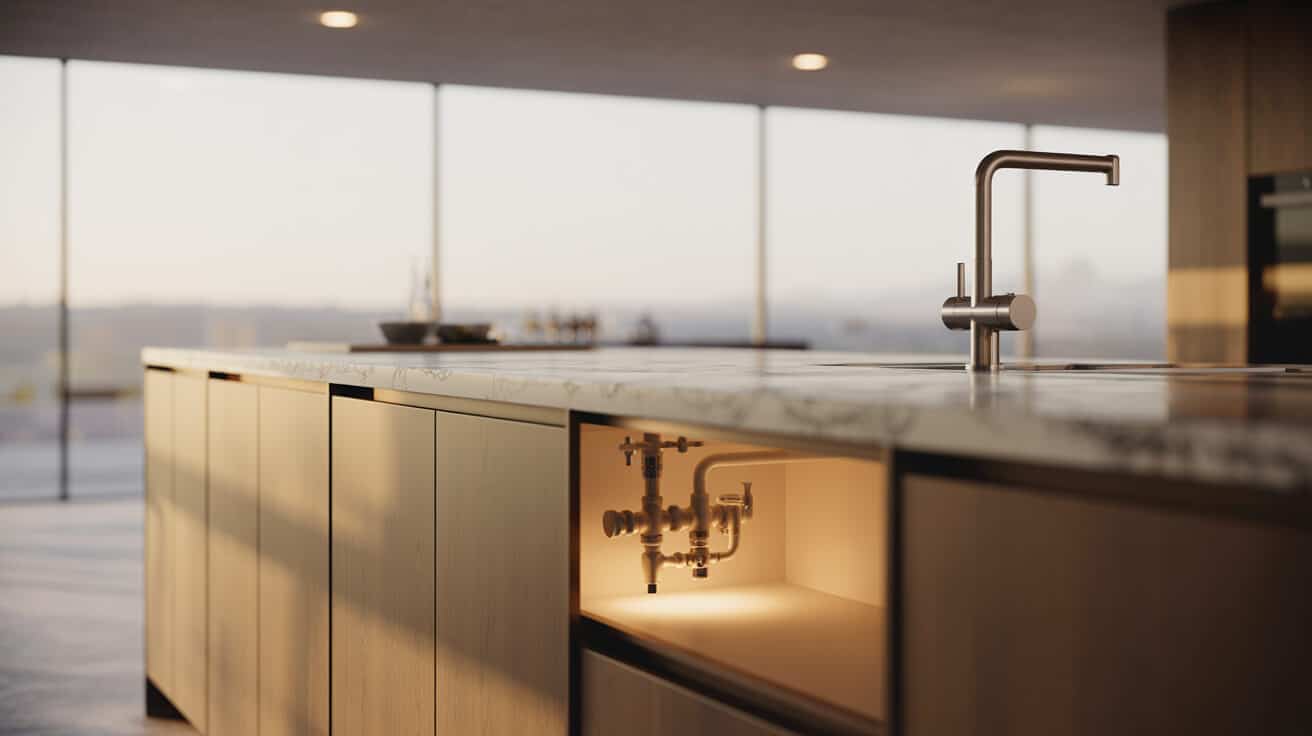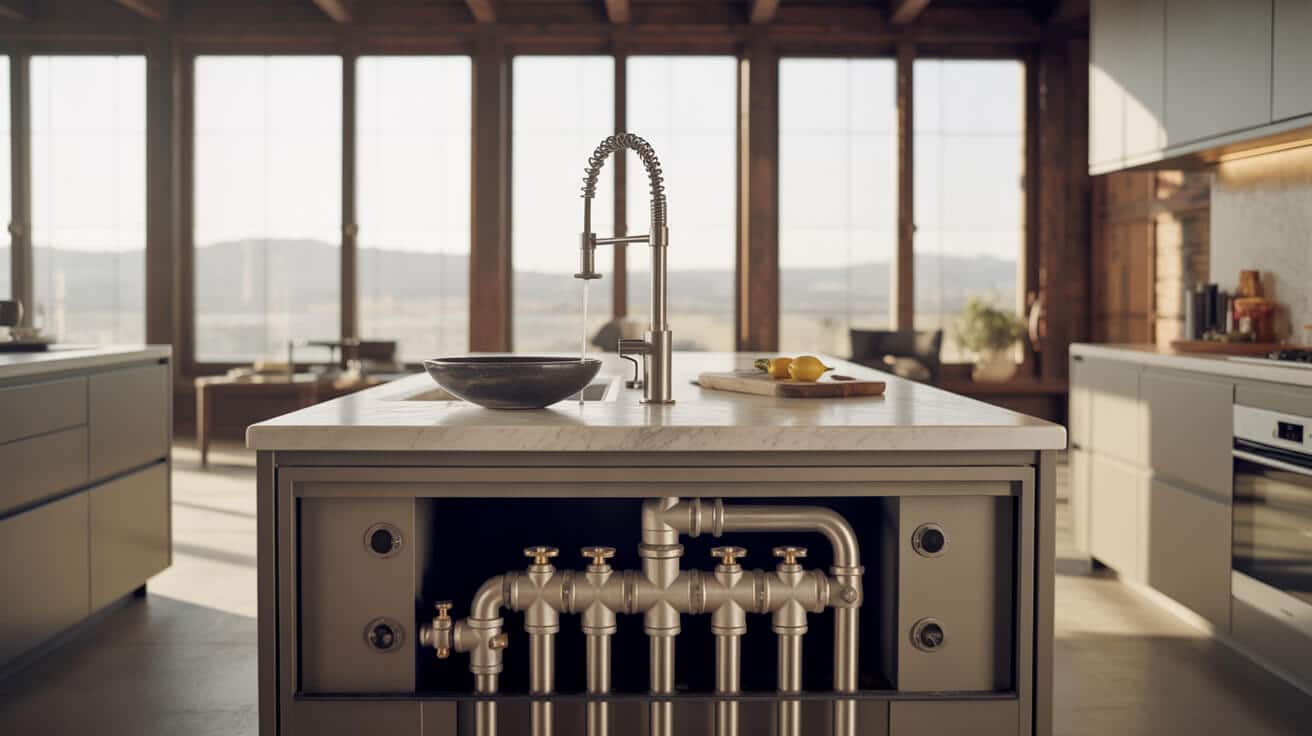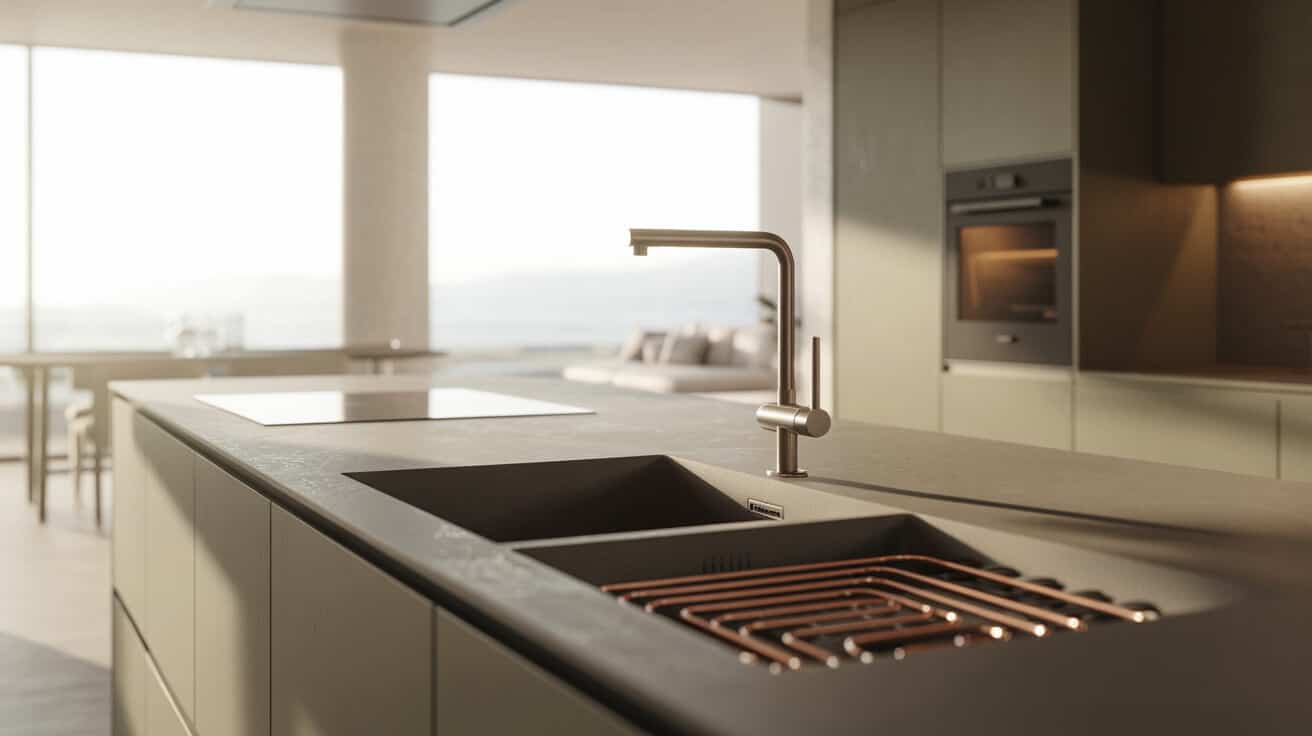Installed at the heart of every well-designed system, mixing valves ensure that radiant floors never overheat, that energy is not wasted, and that safety standards are met without compromise. As legal frameworks and efficiency standards intensify, these components have become essential for property compliance, lifecycle performance, and the evolving expectations for home and building comfort. Their silent operation offers stakeholders confidence—whether for a new family home, a managed lettings portfolio, or a major commercial retrofit. In combination with informed installation and proactive maintenance, as offered by companies such as Plumbers 4U, mixing valves anchor the reliability and compliance of every underfloor heating solution.
Lead
A mixing valve for underfloor heating is a hydraulic device that proportionally blends water from hot and cool sources to deliver a precise temperature suitable for radiant floor circuits. Located between the primary heat source and the underfloor circuit manifold, the valve automatically or mechanically adjusts flow ratios to maintain a safe, energy-efficient environment. Applications span from domestic new builds and retrofits to commercial and public buildings, enhancing comfort, efficiency, and safety in every context.
Etymology or name origin
The term “mixing valve” originates from its central function: modulating the mixing—or proportional blending—of two water streams at differing temperatures. Over time, industry literature has introduced synonyms such as “blending valve” for general-purpose devices and “thermostatic mixing valve” (TMV) to refer to self-regulating, temperature-sensitive models. Evolving standards have driven further nomenclature: “motorised mixer,” “injection valve,” and “manifold-integrated blending set” all reflect developments in control methodology, integration strategy, and regulatory framing.
Overview / context
Mixing valves underpin the safety, comfort, and regulatory compliance of contemporary hydronic underfloor heating systems. Their primary function is to regulate the maximum flow temperature entering floor circuits, reducing the risk of damage to floor coverings and substructure, and guarding against accidental scalding. Within typical systems, the valve is installed at the interface between the boiler (or heat pump) primary loop and the in-floor radiant circuit, positioned to blend high-temperature supply and low-temperature return water. This arrangement creates optimal operating conditions not only for comfort but also for energy conservation, since underfloor heating systems operate most effectively at temperatures lower than conventional radiators.
The presence of a mixing valve is mandated by modern building codes, reflecting both legislative focus on energy efficiency and the proliferation of Condensing Boilers, heat pumps, and low-temperature alternatives. In the realm of property management, integrating a mixing valve is fundamental to both asset protection and occupant well-being, making it central to the operational philosophy of many professional service companies including Plumbers 4U. By delivering a stable, consistent temperature, mixing valves empower you to realise the design potential of your underfloor heating investment while ensuring long-term system resilience and compliance certainty.

History
Origins and early designs
Early floor heating systems, dating to the mid-twentieth century, used rudimentary methods—manually set ball valves, by-pass tees, or simple gates—to avoid overheating. As the demand for distributed, gentle heating in residential and institutional settings increased, the limitations of fixed controls became apparent, particularly with the advent of synthetic flooring and more sensitive building fabrics.
Industrial emergence
The 1970s and 1980s marked a surge in hydronic engineering, with Europe—particularly the UK, Germany, and Scandinavia—seeing rapid development in radiant floor technologies. Mechanical thermostatic mixing valves entered the market, automating the blend of hot and cool flows to a setpoint without user intervention. The spread of manifold-based layouts in both commercial and domestic installations rendered these valves a structural necessity, furthered by greater legislative scrutiny of heating safety and efficiency.
Contemporary evolution
Recent decades have seen massive advances in control logic, actuator technology, and integration with zone sensors, smart thermostats, and building management systems. The synergy of digital setpoint adjustment, weather compensation, and programmable zoning has allowed for expansive flexibility, enabling one property to host multiple target temperatures across different zones or substrates. Simultaneously, regulatory regimes such as UK Building Regulations Part L and sector-specific standards (e.g., TMV2/TMV3 for anti-scald) have solidified the mixing valve as a core compliance component in both private dwellings and commercial portfolios.
Concept / description
The mixing/blending process
A mixing valve is engineered to blend fluid from a hot source (boiler, heat pump, or district supply) with cooler return water, delivering a mixed flow at a temperature suitable for underfloor distribution. The blend ratio is regulated using a temperature-sensitive mechanism—thermostatic capsule, wax element, or digital actuator—that detects outlet temperature and modulates valve position accordingly. This ensures a continuous correction mechanism, maintaining output within a narrow band (often ±2°C of setpoint) even as heat demand, source temperature, or return flow varies.
Major components
Principal elements consist of a valve body—commonly brass, stainless steel, or high-durability polymers—containing the mixing mechanism; an actuator (mechanical, thermostatic, or motorised); temperature adjustment interface; and, increasingly, integrated sensor or controller connections. Advanced designs include pressure balancing, anti-scale features, and valves suited for easy embodiment within compact manifold assemblies.
Thermostatic vs. motorised vs. manual
- Thermostatic valves: use physical expansion of a temperature-sensitive element to govern mixing, requiring no external energy or programming and well-suited for most residential and small commercial applications.
- Motorised valves: rely on electric actuators, opening pathways to remote setpoint control, timed schedules, and integration with property-wide automation systems—a key distinction for large, zoned, or dynamic environments.
- Manual valves: employ a user-rotated control, now largely reserved for legacy systems or temporary measures, owing to their lack of self-regulation and increased risk of maladjustment.
System position and connections
Mixing valves are typically installed immediately upstream of the underfloor distribution manifold but can also be placed within centralised plant rooms or modular service closets. Correct orientation according to manufacturer guidelines is essential for both safety and longevity; improper installation can result in dead spots, hydraulic imbalance, or reduced efficiency.
Functionality / purpose / applications
Temperature regulation
The core purpose of a mixing valve is to ensure the water feeding underfloor circuits remains within safe, controlled limits. This protects delicate flooring, prevents warping or damage to adhesives and substructures, and reduces the threat of scalding or discomfort to occupants.
Energy management
By permitting only as much heat into the circuit as necessary for ambient conditions, mixing valves facilitate wide adoption of condensing boiler and low-temperature heat pump strategies. They minimise cycling losses and maximise overall system efficiency, contributing to better energy ratings and reduced operational costs for both you and your organisation.
System zoning and customization
Modern buildings, especially those featuring open-plan layouts or multi-use spaces, gain significant adaptability by deploying motorised mixing valves and actuators at the manifold. This allows distinct rooms or areas to maintain unique setpoints according to individual preferences or occupancy patterns, especially relevant for property managers and landlords managing diverse tenant needs.
Compliance and risk reduction
Mixing valves aid in meeting statutory compliance—requirements set forth by Building Regulations and safety standards (e.g., WRAS, G3, TMV2/3 for anti-scald)—and support the provision of accurate logbooks, maintenance records, and occupancy documentation.
Property and asset longevity
Proactive regulation of water temperature naturally extends the operational lifespan of all associated system components (pipes, manifolds, adhesives, flooring), while reducing frequency and cost of repairs or insurance claims.
Classifications / types / variants
Thermostatic mixing valves (TMVs)
TMVs use a temperature-sensitive wax or bi-metal element that expands or contracts to proportionally mix hot and cool flows. TMV2 valves are designated for general domestic and commercial usage, while TMV3 are required in higher-risk applications such as care homes, hospitals, and schools, providing accelerated anti-scald closure and enhanced shutoff safety.
Motorised and electromechanical valves
Electric or servo-driven designs open up programmable schedules, remote diagnostics, and seamless interfacing with smart thermostats or app-based controls. Ideal for multi-zone, high-end domestic, and institutional properties, they excel where remote adjustment or continuous setpoint optimization is required.
Manual and injection types
Manual valves, though less common, still see application in building upgrades where cost, simplicity, or legacy compatibility is paramount. Injection systems—engineered for large-scale or high-flow scenarios—inject a calculated amount of hot water directly into recirculating loops based on precise electronic feedback, maintaining temperature balance on a central controller.
Modular and manifold-integrated assemblies
Modern system kits frequently provide plug-and-play assemblies, bundling mixing, balancing, and isolation within a compact mounting suitable for quick deployment. A single manifold housing can serve both as distribution point and authority for blending logic, integrating sensors and controls to reduce installation complexity.
Industry-leading manufacturers
UK and EU markets regularly specify ESBE, Danfoss, Honeywell, Polypipe, Heatmiser, Uponor, IVAR, Emmeti, and Giacomini. Products are selected based on the intersection of technical requirements, system compatibility, warranty, and regulatory compliance, with Plumbers 4U able to offer guidance on suitable models for your specific application.

Systems / tools / methodologies
Underfloor manifold integration
System integration begins with precise manifold layout—carefully mapping flow and return paths—before inserting the mixing valve, typically via union or compression fittings. Circuit balancing valves, drain/fill points, and pressure gauges are used alongside the mixer to ensure proper flow distribution. In multi-zone systems, actuators and zone valves are mounted to regulate each loop independently. Water quality is checked to prevent scale and ensure long actuator life.
Installation practices
Successful installation requires skilled pipework, calibrated tightening, leak testing, and sometimes the addition of insulation or anti-vibration mountings. In both retrofits and new builds, pre-plumbed modular kits can expedite fitting, particularly in managed housing or logistically complex commercial spaces.
Maintenance and servicing
Routine service consists of annual checks: verifying temperature stability, cleaning or replacing sensors, inspecting actuator operation, testing valve shutoff response, and descaling as necessary. Service logs, maintenance reports, and compliance templates support both property managers and regulatory authorities with actionable records.
Troubleshooting protocols
Systematic diagnosis starts with floor and manifold temperature readings; if discrepancies arise, checks follow on valve response, actuator status, and sensor calibration. Table 1 illustrates a common error mapping for underfloor mixing valves.
| Symptom | Possible Cause | Recommended Action |
|---|---|---|
| Floor overheating | Valve set too high/fault | Adjust setpoint or replace |
| Cold spots | Manifold balancing error | Rebalance, isolate for air |
| Long heat-up time | Sluggish actuator | Lubricate, test, or replace |
| Actuator noise | Mechanical obstruction | Inspect and clear debris |
Stakeholders / entities involved
Personas engaging with mixing valves, directly or indirectly, span the entire property lifecycle:
- Homeowners/Residents: Seek optimal comfort, reliability, and security in system dependability.
- Landlords: Focus on asset risk mitigation, legal compliance, and cost containment across their portfolios.
- Facilities Managers: Coordinate performance, service schedules, and documentation within larger estates.
- Engineers/Installers: Responsible for specification, assembly, configuration, commissioning, and handover training; many maintain direct relationships with Plumbers 4U for ongoing support.
- Regulatory Authorities: Mandate, audit, and enforce product and system compliance.
- Manufacturers/Suppliers: Design, test, and warrant components for enduring lifecycle value.
Legal / regulatory / ethical considerations
Building standards and codes
The UK prescribes specific temperature, pressure, and operational safeguards in Part L (fuel and power conservation), Part G (sanitary hot water), and G3 (hot water system safety), making the prescription and installation of mixing valves a regulatory necessity in all but the most basic heating circuit.
Product and installer certification
Water Regulations Advisory Scheme (WRAS) approval and WaterSafe installer accreditation underpin legal admissibility, with installer bodies like CIPHE providing additional competence verification. Adherence to these frameworks ensures that you, as a property owner or manager, can document full legal compliance in the face of an audit or insurance claim.
Maintenance, records, and O&M
Regulations require that rental and commercial properties maintain current logbooks—detailing every mixing valve make, model, and annual check. Plumbers 4U supports clients with printable and digital maintenance templates for pain-free compliance.
Health and safety–centric requirements
Adopted standards (e.g., TMV2 for domestic and TMV3 for care/education) ensure anti-scald, rapid cut-off, and legionella-prevention in all service environments. Ethical best practice includes transparency in documentation, prompt reporting of issues, and engagement with only qualified trades.
Performance metrics / data / measurements
Engineering performance is assessed via several measures:
- Operational temperature: Generally maintained between 35°C and 55°C; variances are immediately flagged for service.
- Pressure and flow: At commissioning, circuits are balanced to match manufacturer’s pressure-flow tables, ensuring even heat distribution.
- Actuator cycle time: Modern motorised valves log operation intervals, alerting facilities teams to abnormal patterns indicating wear or pending failure.
- Service interval compliance: Annual maintenance is benchmarked; noncompliance statistically correlates with higher repair costs and insurance claims for property owners.
- Efficiency benchmarks: Properties with correctly specified mixing valves demonstrate up to 15% gain in overall energy use compared to systems lacking temperature regulation, particularly when integrated with weather compensation or adaptive control.
Challenges / barriers / limitations
Engineering and operational challenges
Issues arise when valves are incorrectly sized, setpoints misconfigured, or installation practices deviate from code. Limescale, corrosion, actuator mechanical wear, or sensor failure can progressively erode performance, requiring comprehensive diagnosis and, in many cases, component replacement.
Property and economic friction
Retrofit projects face access limitations, legacy component mismatch, and heightened downtime risk. Cost-sensitive upgrades may undervalue the price of compliant mixing valves, introducing broader system vulnerabilities. For rental and commercial portfolios, deferred maintenance exponentially increases both regulatory and insurance exposure.
Compliance and evolving policy
Legislative change, embodied in tightening energy targets, minimum EPC banding for lets, and expanding health & safety mandates, places ongoing pressure on property owners and managers to adopt and properly maintain compliant systems.
Impact / influence / legacy
Mixing valves are foundational to the widespread adoption of underfloor heating, catalysing safer, more precise, and more energy-efficient deployments across the built environment. They have empowered property owners to embrace low-temperature, efficient heating while reducing incidence of structural damage and occupant injury. The evolution from manual blending to smart-enabled, sensor-integrated control illustrates the close alliance of regulatory development and product innovation.
Their legacy endures in the safety records of properties, the measured increase in comfort ratings among tenants and owners, and the demonstrable efficiency gains now enshrined in national building standards. Their utility continues to anchor best practice for property professionals, designers, and service companies such as Plumbers 4U.
Future directions, cultural relevance, and design discourse
Mixing valves are positioned for intensive evolution as the building sector accelerates toward decarbonisation, user-led smart regulation, and the rise of adaptive, user-centric systems. Forward-looking designs propose wireless, self-calibrating mixing assemblies, pattern-recognition logic, and context-aware zone optimization—delivering differentiated comfort to every room in real time. Market interest in sustainability and regulatory simplicity is fueling a drive toward standardised modular systems, reducing specification risk and expanding retrofit feasibility for older or unusual properties.
Regulatory foresight points to further tightening of anti-scald and efficiency standards, while the growing prevalence of proactive maintenance, digital service histories, and cloud-connected audit trails will grant property owners and managers confident, documented control over system health. As cultural expectations settle around invisible, reliable comfort—and the unobtrusive systems that deliver it—mixing valves remain a touchstone of engineering ingenuity and responsible property stewardship, their silent work shaping the quality of contemporary life and the resilience of tomorrow’s building stock.

